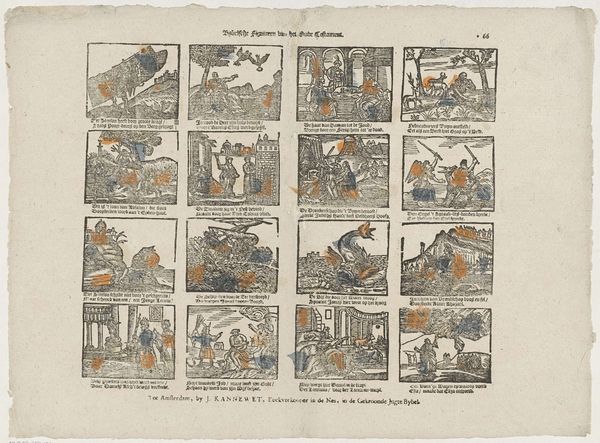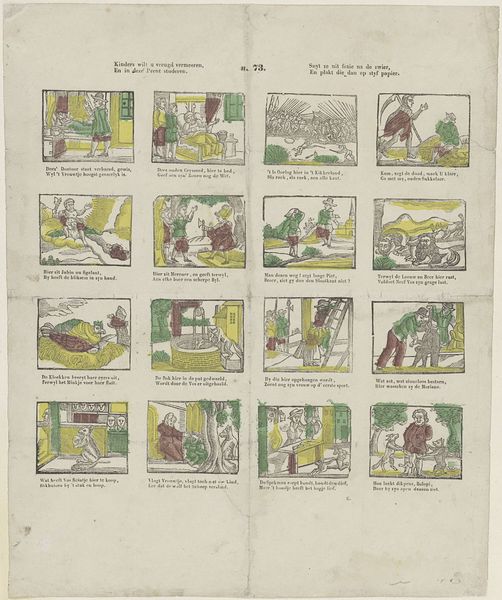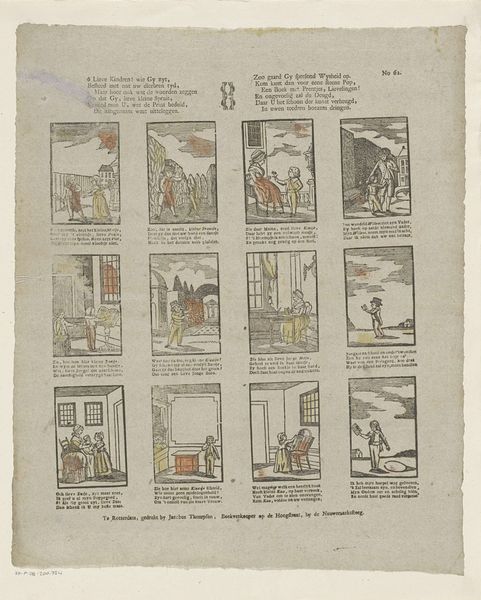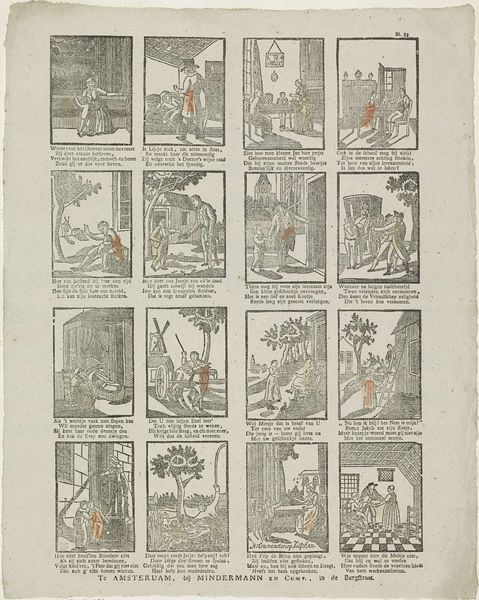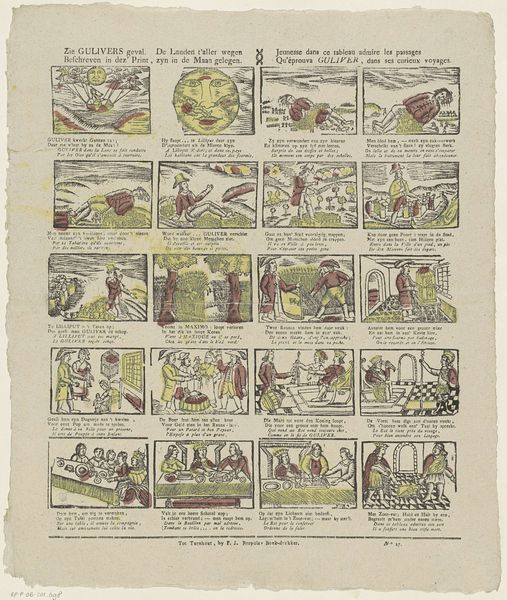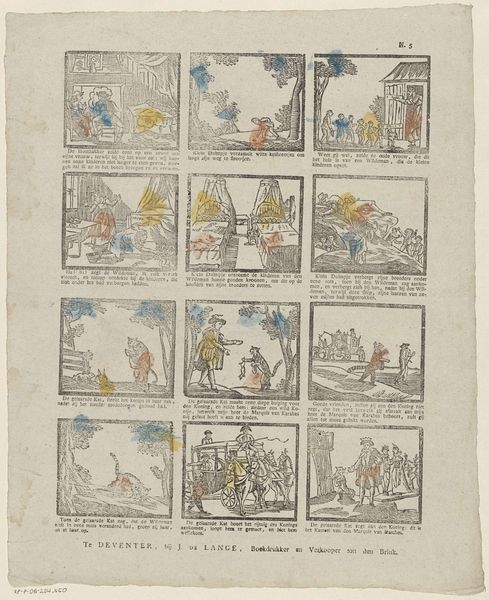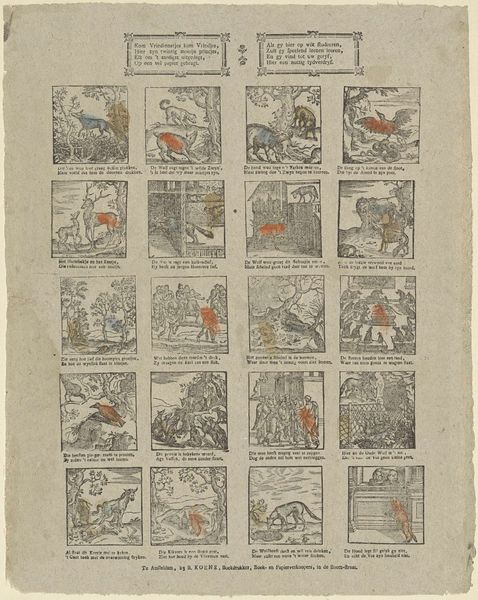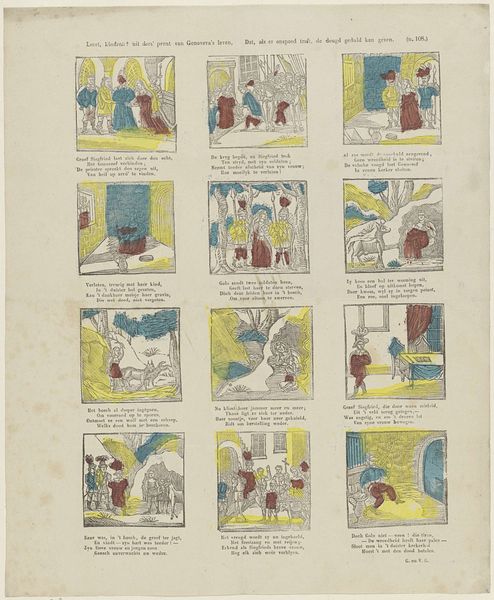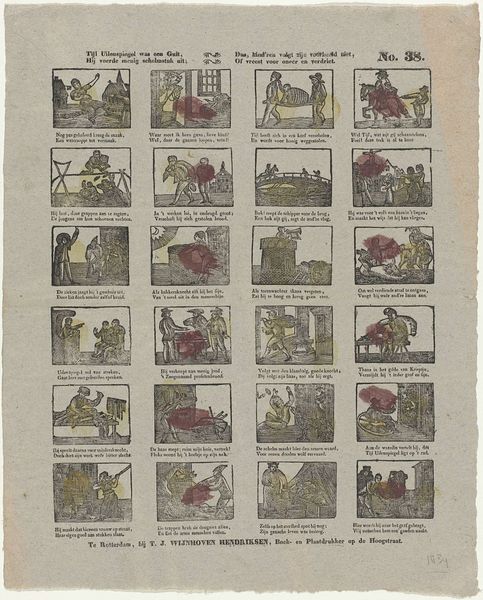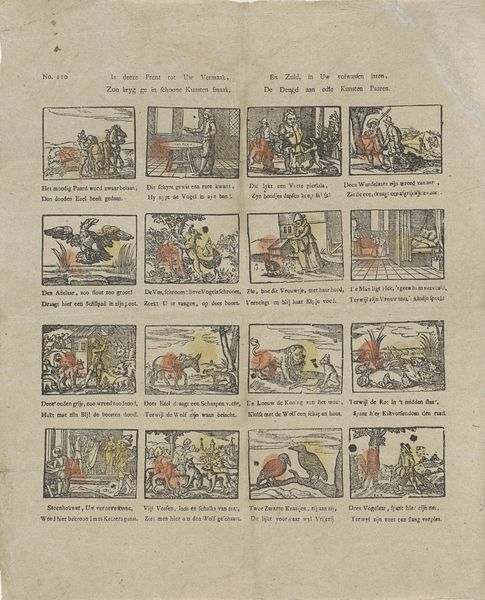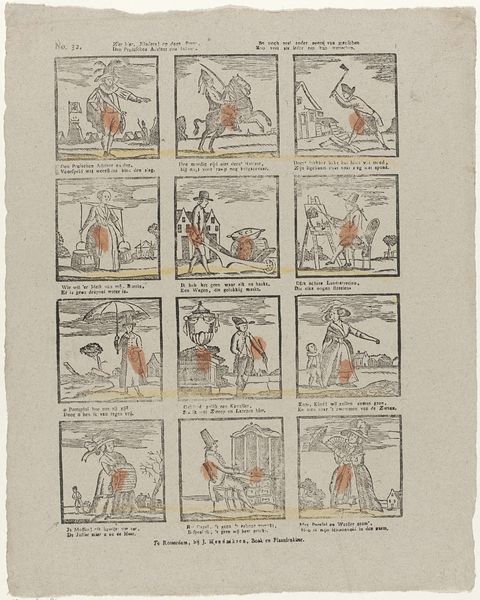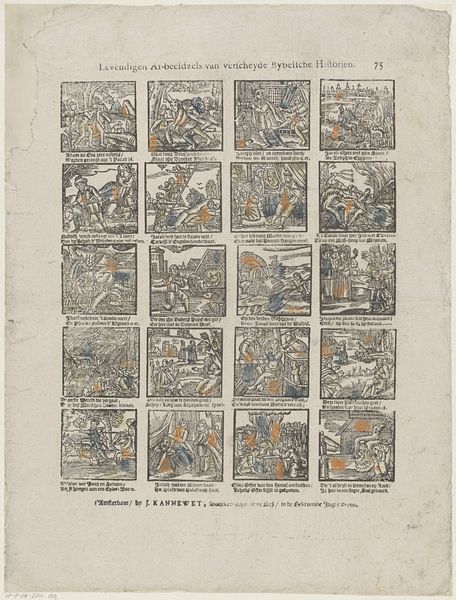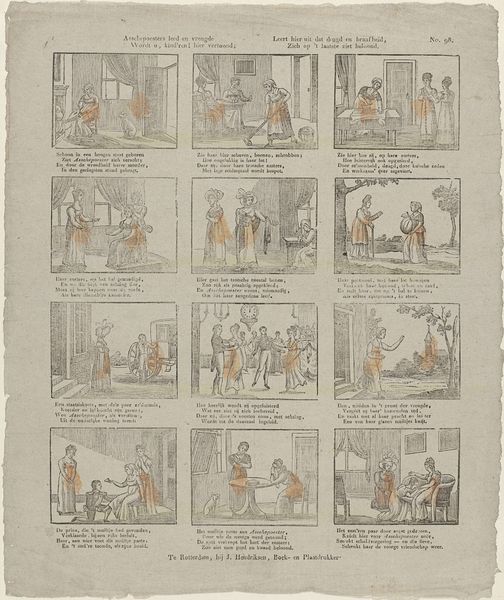
Beschouw, o vaderlandsche jeugd! / Der vadren trouw en moed en deugd. / En dat uw teeder hart ontbrand'/ In zucht voor hun en 't vaderland 1806 - 1830
0:00
0:00
print, engraving
#
neoclacissism
#
narrative-art
# print
#
cityscape
#
history-painting
#
academic-art
#
engraving
Dimensions: height 409 mm, width 335 mm
Copyright: Rijks Museum: Open Domain
Curator: I'm immediately struck by the overall composition. It's like a visual storyboard, almost comic-like in its arrangement of scenes, but imbued with a certain solemnity. Editor: We're looking at an engraving titled, “Beschouw, o vaderlandsche jeugd! / Der vadren trouw en moed en deugd. / En dat uw teeder hart ontbrand'/ In zucht voor hun en 't vaderland”, which roughly translates to "Behold, O patriotic youth! / The faithfulness and courage and virtue of your fathers / And let your tender heart ignite / In longing for them and for the fatherland." It’s attributed to Gerrit Oortman and dates back to sometime between 1806 and 1830. Curator: That title speaks volumes, doesn't it? A call to action, really, steeped in nationalist sentiment. Considering its historical context, produced during a period of upheaval in the Netherlands, I can understand why the artist was attempting to evoke pride. Editor: Absolutely. This print operates on several levels, as a piece of art, a historical document, and a propaganda tool. What's also crucial is to consider the power dynamics embedded in these heroic narratives. Which youths had access to them? What kinds of patriotic expressions were deemed acceptable? Curator: It's interesting how the individual scenes depict various historical moments or allegorical representations, I assume, rather than focusing on specific people. We should encourage our visitors to connect with the social values presented—allegiance to country, family, and even a specific moral code that's obviously geared toward the indoctrination of Dutch youths. Editor: And it seems influenced by the aesthetics of Neoclassicism, given the ordered composition and focus on morality. The architectural settings contribute to that feel as well. It clearly elevates historical or moral figures to a place where it encourages emulation. This makes it not only artwork but almost instructional material. Curator: When contextualizing, it can also give us insights into contemporary debates regarding cultural heritage. Works like this can offer crucial information that we need to reflect on patriotism or citizenship as it evolves over time. Editor: This particular work really illustrates the importance of looking beyond face value, towards broader questions concerning the art’s influence and significance in a much wider socio-political environment.
Comments
No comments
Be the first to comment and join the conversation on the ultimate creative platform.
